R. L. Deppmann is offering another series of seminars, this fall, which are centered on “Energy Savings and ASHRAE 90.1 and 189.1 standards”. During a couple of the first 7 seminars, the question of the air separation location sparked a short discussion. Let’s review the response in this Monday Morning Minute.
Entrained air is released from the water or Dow glycol heat transfer fluid as the temperature increases. (See chart below). Entrained air is also released at the lowest pressure in the system. So as a general rule, the air separator performs best in the warmest water and at the lowest pressure point in the system.
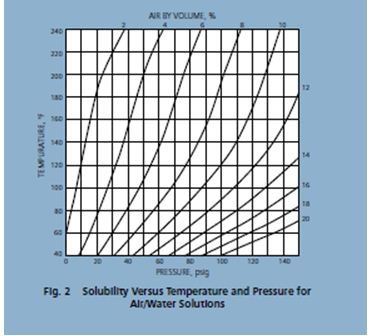
From B&G Rolairtrol manual A-307A page 8
COMMERCIAL & PROCESS:
Whether you are using a Bell and Gossett CRS coalescing air and dirt separator, a Bell and Gossett Rolairtrol air separator, or a low velocity buffer tank; the placement of the air separator in a chilled water system is on the secondary return. The air separator in a heating system is on the secondary supply.
RESIDENTIAL:
Whether you are using a Bell and Gossett EAS coalescing air separator, a Bell and Gossett IAS inline air separator, or a low velocity buffer tank; the placement of the air separator in a chilled water system is on the secondary return. The air separator in a heating system is on the secondary supply.
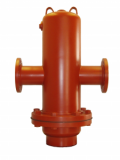
B&G CRS air/dirt separator
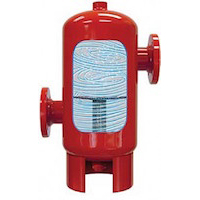
B&G Rolairtrol air separator
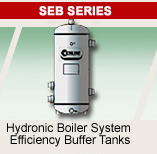
Cemline Buffer Tank

B&G EAS air separator

B&G IAS air separator
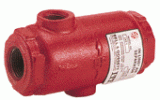
B&G IAS air separator

